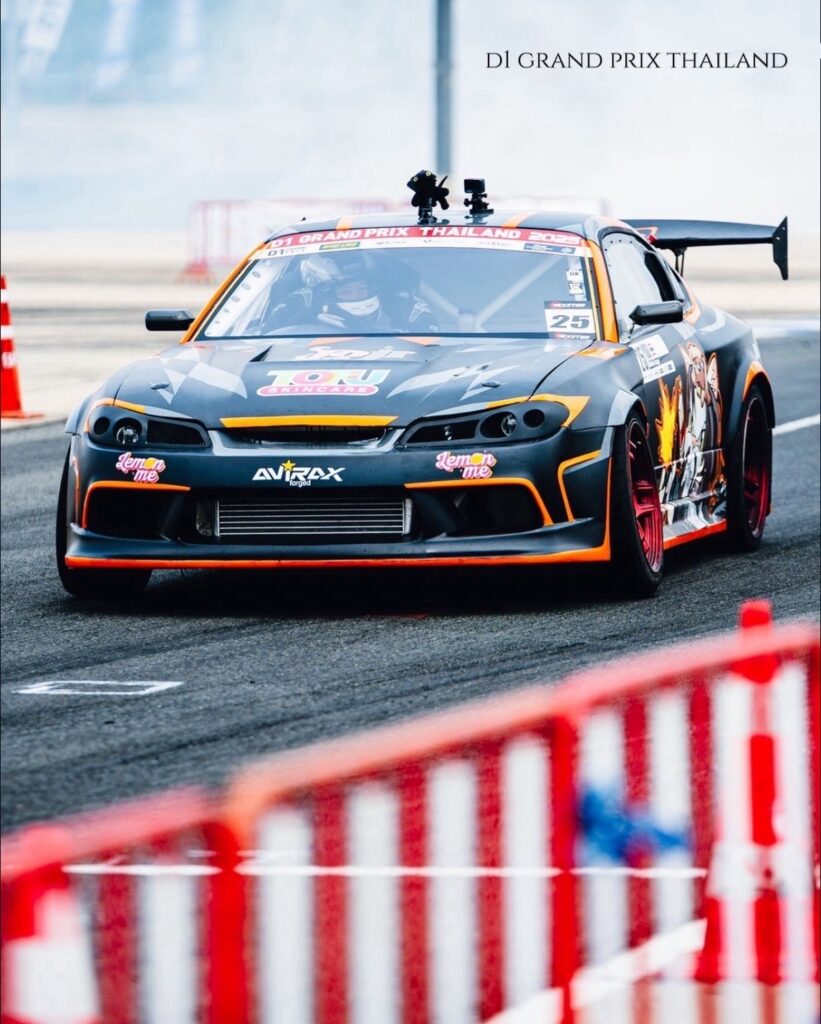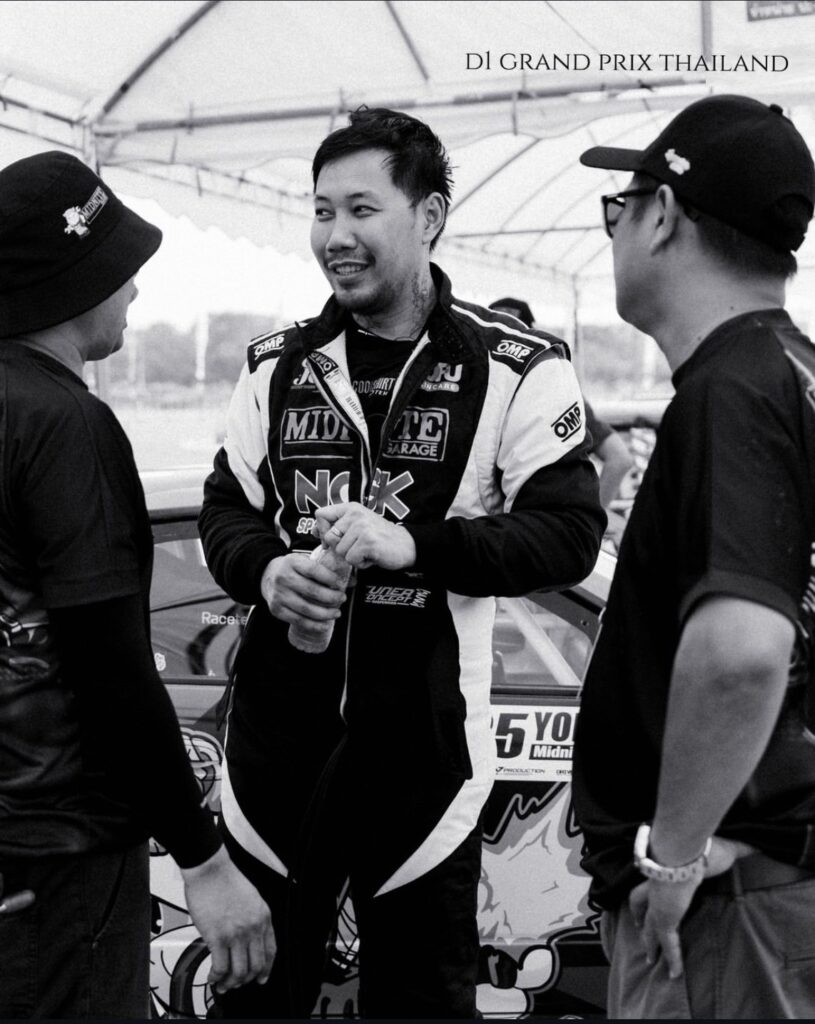Burning Rubber, Owning Corners – Inside Yod Midnite Garage
From the blinding lights of the drag strip to the smoke-filled corners of a drift track, Yod’s journey is one of evolution, grit, and unshakable passion. As the founder of Midnite Garage, he’s not just a driver — he’s a craftsman, a competitor, and a man who turned childhood curiosity into a lifelong pursuit of sideways perfection.

Q: How did you first get into the racing scene?
A: Oh, racing? Well, if we’re talking about when I actually began competing seriously, that goes back quite a long time. I started out in drag racing, the kind of racing that takes place in a straight line. Drag racing is probably the easiest entry point for most people because it’s so straightforward. If you have a stock car, you can already go and give it a try. That’s exactly what I did, I took my own everyday car to the strip, and from there, I began making modifications. Bit by bit, I upgraded the car’s performance, and as I improved the car, my interest and involvement in racing grew naturally.
Q: Did you get into drifting before or after opening Midnite Garage?
A: I’ve always had a passion for cars, but before I ever competed in drifting, I was focused on building my own workshop. I opened Midnite Garage first, mainly to work on cars and explore my interest in automotive performance. Once the shop was running and I had more control over the cars I was working on, it made sense to step into competition. Building my own cars meant my costs were much lower than if I had to pay someone else to prepare them, so it gave me the perfect opportunity to try racing myself.
Q: Was learning to drift difficult?
A: I’d say that at the basic level, drifting is about understanding the core principles, how weight transfer works, how to control the throttle and steering to initiate and maintain a slide. But once you move into advanced drifting, especially in competitive situations, it’s much more demanding. At that stage, your body’s reaction time and ability to make split-second decisions under pressure become just as important as your technical understanding.
Q: It seems much harder than drag racing, right?
A: Definitely harder. In drag racing, the process is very simple, you only shift gears about three times in the whole run. You launch in first gear, then shift to second, third, and fourth, and that’s the end of it. But drifting requires a whole sequence of coordinated actions. You have to pull the handbrake, apply the foot brake, downshift, upshift, counter-steer, blip the throttle, and sometimes do all of those things in quick succession. It’s a much more physically and mentally engaging style of driving.

Q: How different is modifying a drag car versus a drift car?
A: The differences are huge, everything from the drivetrain and suspension setup to the way the engine is tuned is completely different.
In drag racing, the goal is to push the car to its absolute limit. You build the engine to produce the maximum horsepower it can handle, because in drag racing, raw power is one of the main deciding factors. But it’s not just about the number, it’s about getting that power to the ground. If you have 1,000 horsepower and can put every bit of it down effectively, your chances of winning are very high. But if you can’t transfer that power efficiently, even with the same 1,000 horsepower, you could still lose.
The setup for drag racing focuses heavily on the rear wheels, since the car only runs in a straight line with no turning involved.
Drift cars, on the other hand, don’t need to run such extreme horsepower numbers. Having less power doesn’t mean you can’t win, because in drifting, success depends equally on the driver and the car. I’d say drifting is about 50% driver skill and 50% car performance, while drag racing is more like 20% driver and 80% car.

Q: Have you ever wanted to race on a circuit, or is that not something you’ve considered?
A: Circuit racing? I’ve given it a try before just to see how it feels, but honestly, it’s not something I really enjoy. It just doesn’t give me the same excitement or connection as drifting does.
Q: So drifting is your real passion?
A: Yes, absolutely. It all goes back to when I was a kid and saw the movie Tokyo Drift. I remember watching the cars sliding sideways and thinking, “What are these cars doing? Why are they moving like that?” It made me curious, I wanted to know how you could make a car’s rear end slide out like that and still keep it under control. That curiosity turned into a fascination, and that fascination has stayed with me ever since.








